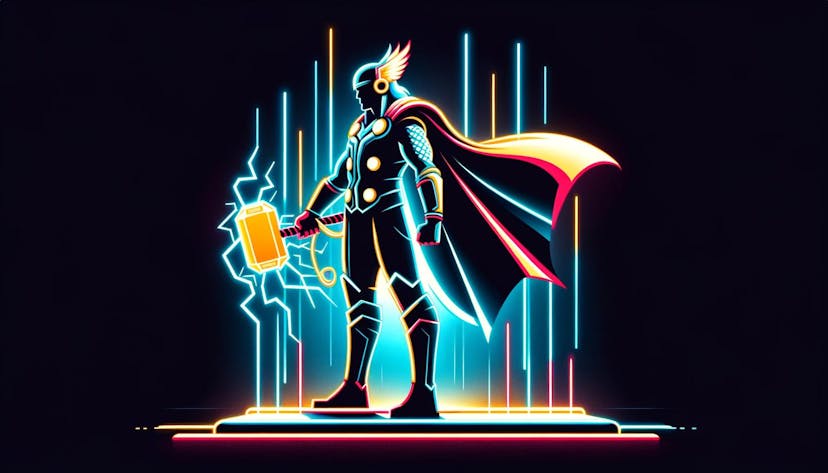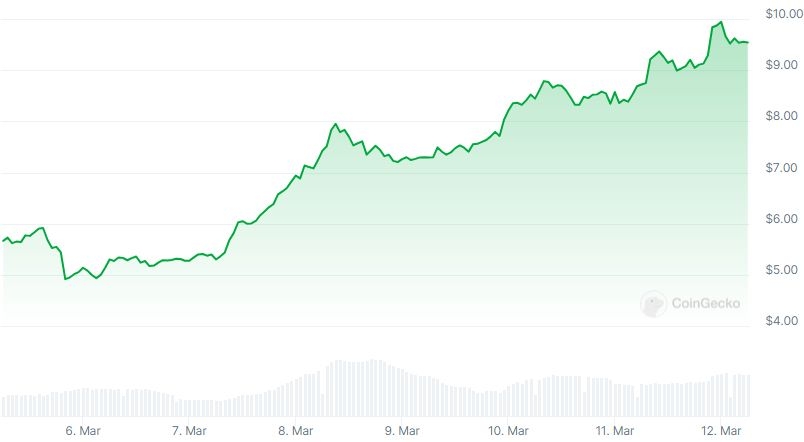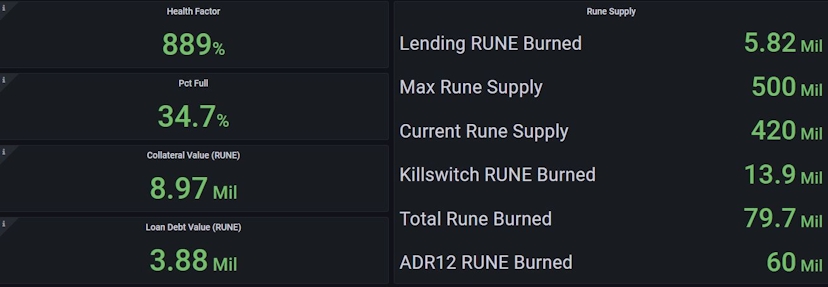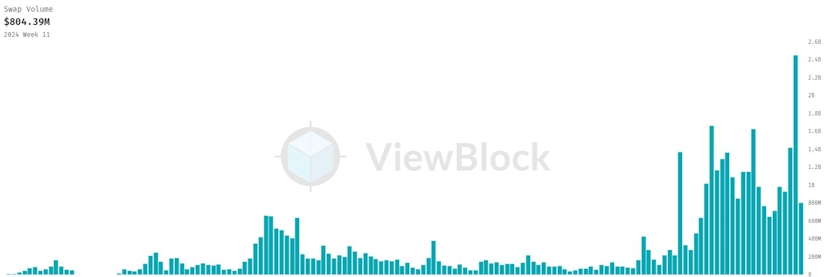Thorchain Thunders Back As Trading Volumes Hit All-time Highs
RUNE is up 70% in the past week, with the cross-chain liquidity protocol’s TVL crossing $500 million.
By: yyctrader • Loading...
DeFi
Thorchain, a decentralized liquidity protocol that facilitates native asset swaps across blockchains, is making a comeback after a string of hacks and a 96% plunge from its all-time high.
RUNE has nearly doubled since the team burned 60 million RUNE tokens last week to boost its lending capacity by $100 million, which accounted for 12% of the total supply. Its total value locked (TVL) climbed 45% to $507 million in that time.
Overall, it’s a remarkable comeback for a veteran DeFi protocol founded in 2018 with much fanfare that fell out of favor after being plagued by a series of exploits.

Thorchain offers interest-free loans against major crypto assets like Bitcoin and Ether, with no liquidations or fixed expiry date. As part of the latest upgrade, collateralization ratios for BTC and ETH were reduced to 200%, meaning users can borrow half the value of their assets.
With stablecoin borrowing rates across DeFi climbing into double-digits on increased demand for leverage amid the ongoing crypto rally, Thorchain presents an attractive alternative for borrowers.
“If you are leveraged long BTC or ETH and plan to stay that way for the next 30 days, you’re being financially foolish if you don’t move over to Thorchain no-interest and no-liquidation loans,” wrote crypto investor Tyler Reynolds.
However, it’s worth noting that Thorchain’s offering differs markedly from traditional overcollateralized loans on DeFi lending protocols like Maker or Aave, which hold borrowers’ collateral under lien until outstanding loans are repaid.
When a loan is opened on Thorchain, the collateral asset is sold for RUNE, while the difference between the collateral value and the loan value is burned. Debt is denominated in TOR – a dollar-pegged unit of account internal to Thorchain – which is based off the median price of all the stablecoins supported by the protocol.
Conversely, when loans are repaid, RUNE is minted and swapped for the original collateral asset, which is returned to the borrower. A potential risk of the design is excessive minting of RUNE if too many borrowers rush to redeem their collateral at the same time during. However, the team has put multiple safeguards in place, including circuit breakers and loan caps, to mitigate the risk.
A risk analysis by BlockScience shows that Thorchain loans can be considered functionally equivalent to American call options, with the protocol being facing similar risks to any entity that sells options.
Loans worth roughly $35 million are currently outstanding, according to a dashboard monitoring the protocol’s health.

Decentralization advocate Chris Blec called the lending product “interesting” but highlighted the risk of Thorchain “suddenly chang[ing] the terms (which it has a history of doing).”
Streaming Swap Volume Hits ATH
Meanwhile, Thorchain’s Streaming Swaps feature, which breaks down large trades into smaller orders that are executed over a period of time to minimize price impact, continues to find favor with traders.
Weekly trading volume crossed $2 billion for the first time last week, and on March 9, the protocol successfully executed its largest swap to date – a $7 million trade of BTC to ETH.

In July 2021, the protocol suffered over $12 million of losses in multiple exploits, including a so-called whitehat attack that drained $8 million. Fortunately, the majority of those funds were recovered in exchange for a bounty, and the project used its treasury to make up the difference.
Thorchain also briefly halted operations twice last year in response to code vulnerabilities.
Advertisement
Get the best of The Defiant directly in your inbox 💌
Know what matters in Web3 with The Defiant Daily newsletter, every weekday
90k+ investors informed every day. Unsubscribe anytime.